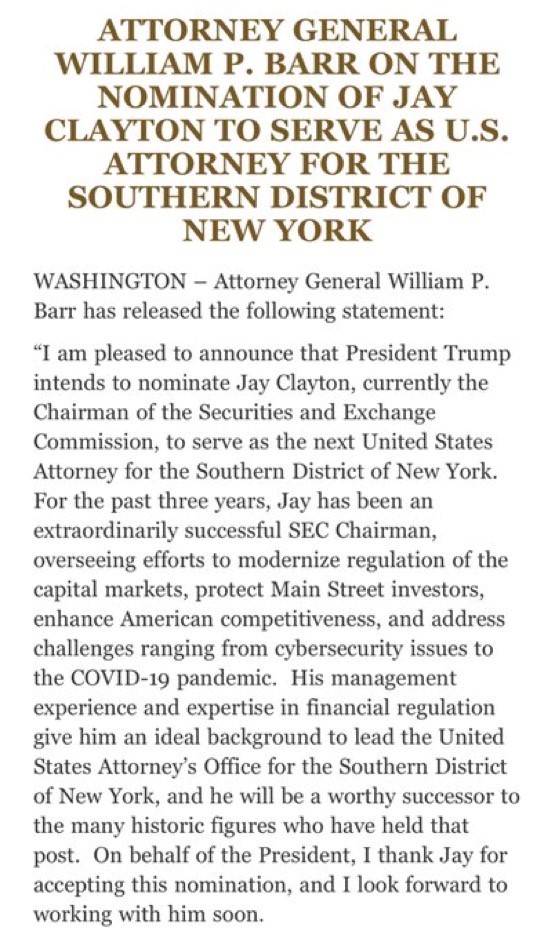
There’s currently a Senate-confirmed Deputy Secretary of Defense — David Norquist. Under 10 U.S.C. § 132(b), *he* is supposed to become Acting Secretary in the event of a vacancy.
Unless Trump fired him, too.
Unless Trump fired him, too.

To be clear, *if* the Federal Vacancies Reform Act allows the President to appoint someone else as Acting Secretary notwithstanding § 132(b), Miller is a valid choice (because of his Senate confirmation). But it's not at all obvious that the FVRA *does* override the DoD statute.
The last time this came up, Trump named as Acting Secretary Patrick Shanahan (who was already serving as the Deputy Secretary), which avoided the issue:
https://twitter.com/steve_vladeck/status/1076901416558645250?s=20
And not for nothing, but he's also ignoring the currently governing Executive Order on DoD succession, which likewise puts the Deputy Secretary first:
govinfo.gov/content/pkg/FR…
govinfo.gov/content/pkg/FR…
Finally, as @jgeltzer points out, Miller isn't eligible to be *Secretary* of Defense because he hasn't been retired from the military for seven years.
He can still be "Acting" if otherwise permissible, but yet another reason why this is messed up..
He can still be "Acting" if otherwise permissible, but yet another reason why this is messed up..
https://twitter.com/jgeltzer/status/1325868871207809024?s=20
• • •
Missing some Tweet in this thread? You can try to
force a refresh









